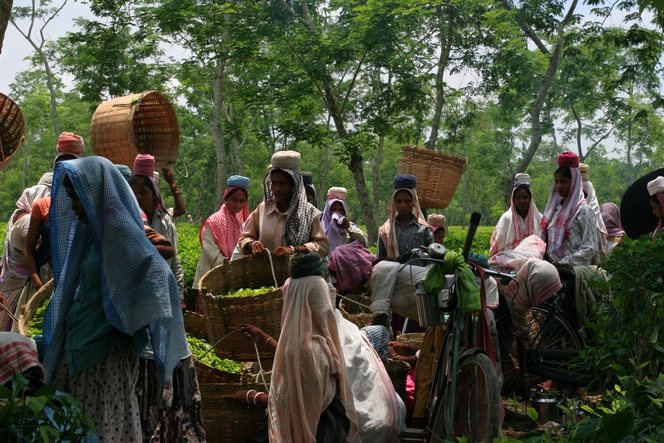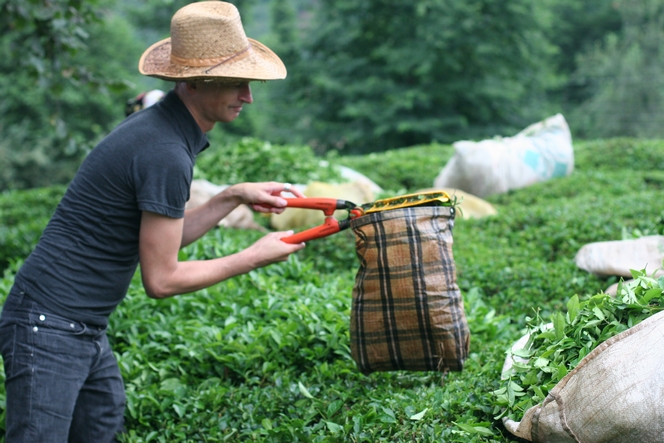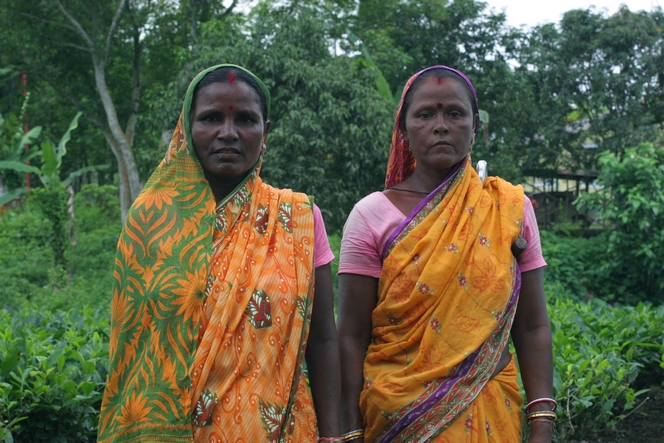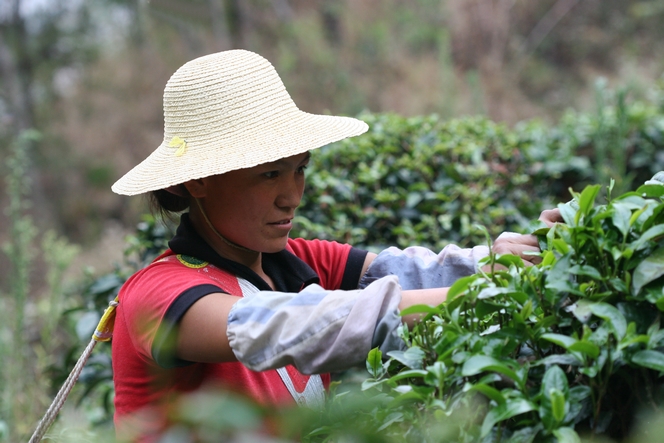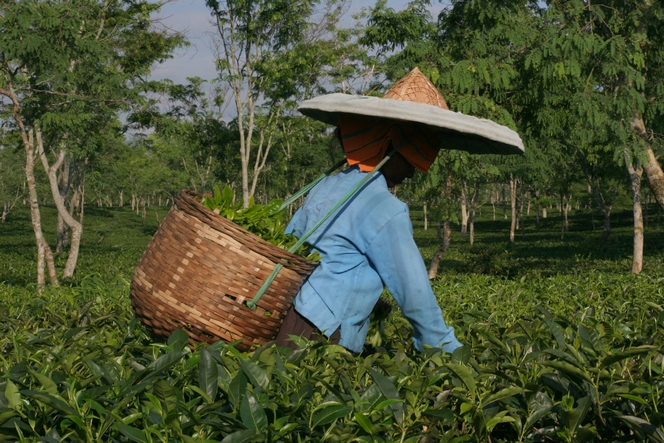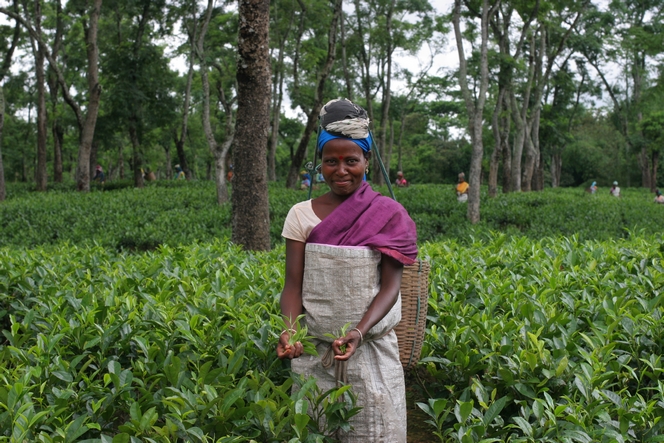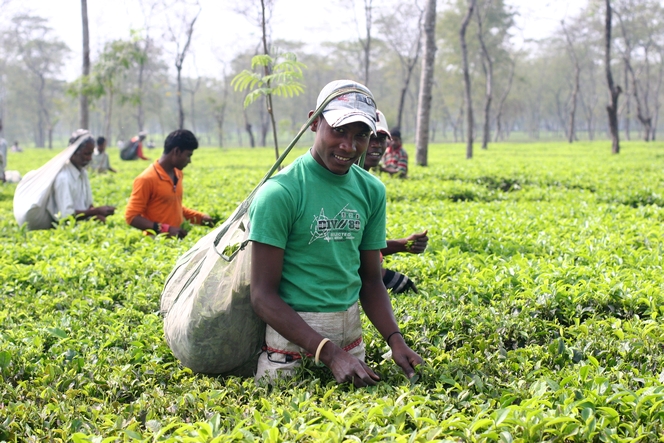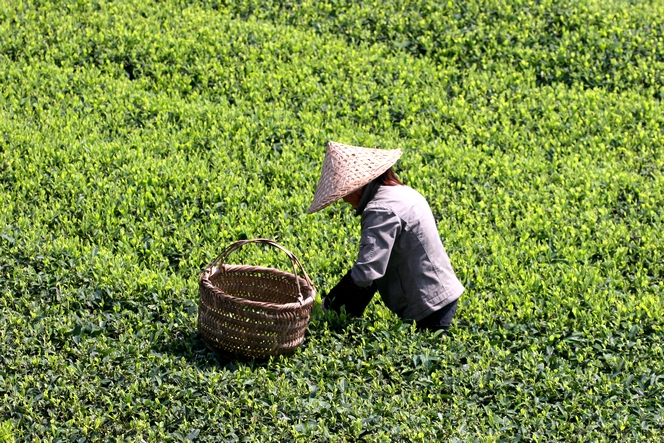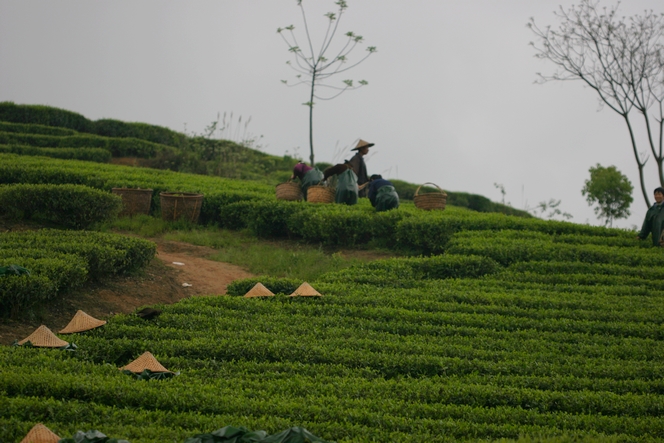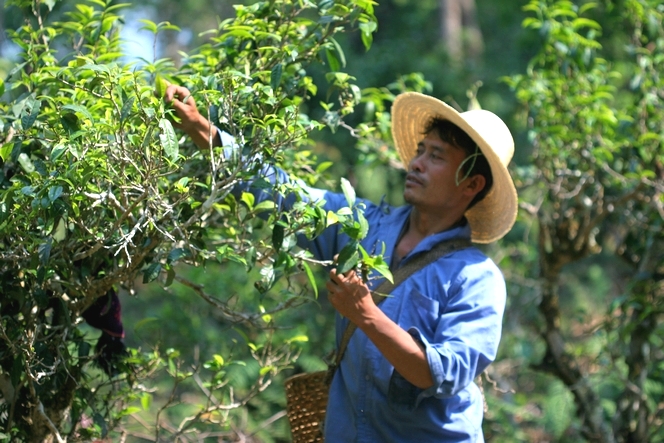In Assam, as soon as harvesting is finished, the pluckers assemble, men on one side, women on the other, and they set off with their precious baskets to the place where they will be weighed. Some women hold their baskets under their arms, but most rest them on their heads. A rolled-up piece of cloth placed precisely on the crown of the head serves to support the basket. These splendidly colourful fabrics look like crowns, making their wearers look like queens, I think.
Harvest
In Turkey, one uses clippers to pluck tea
In general, good tea should be plucked by hand. The leaf bud and the first two leaves on each stem are plucked between the thumb and index finger, with a precise, rapid movement.
It is best to avoid the use of clippers, although they are commonly used in some regions of the world where tea is produced with less emphasis on quality. Although the farmers in the Rize region of Turkey are very friendly, hospitable people, it has to be said that their harvesting methods massacre the tea.
Here, I have dared to give them a helping hand and I’m a little ashamed, I must admit, to be caught red-handed using their tool.
In Assam, there is a hierarchy in tea harvesting
There is quite a hierarchy among the people in charge of harvesting tea in Assam. This is true on the large plantations, anyway; there are also independent plots owned by small producers.
On the large plantations, the manager supervises the assistant managers, who organise the babus, whose role is to oversee the work of the sardars, who themselves are responsible for supervising the team of workers.
In this photo taken on the Dufflating plantation you can admire two sardars, who don’t look particularly approachable on first glance. But perhaps they are just reflecting, in their serious expressions, the position of authority they hold.
Camellia : a shrub with a tough foliage
In many countries, the men and women who pluck tea leaves wear a type of sleeve made from a light canvas, which covers part of the arm.
Camellia is quite a tough shrub, and at the end of the day, without this protection, which can be worn directly on bare skin or over the top of a garment, the pluckers’ arms would be covered in scratches.
I expect this young woman from Yunnan, who looks rather stylish beneath her straw hat, would agree.
Plucking tea with 35°C and 100% humidity
When you know what the climate is like here in Assam, you realise this woman must be brave to work outside. Throughout my stay in the Jorhat region, the temperature varied between 35° and 38°C, while the humidity came close to 100%.
Whatever the temperature, she rarely removes her wide-brimmed hat: it protects her from the powerful rays of the sun and also from the frequent and torrential downpours that can come at a moment’s notice.
Charming tea plucker on Dufflating Tea Estate
The yield per hectare here in Assam is four times higher than in Darjeeling, and totals two tonnes a year. Each tea plant produces such a quantity of leaves that between March and November, the shoots on each bush are plucked at least once a week. A record! Yet this charming tea plucker on the Dufflating Tea Estate does not seem overwhelmed by the scale of the task; in fact she looks quite happy.
Tea harvesting by the Adivasis in India
In the Dooars region of India, tea is often harvested by the people known as the Adivasis. Often despised by other Indians because they are right at the bottom of the social ladder, they benefit from positive discrimination, along with the lower castes. They don’t get much attention, which is another reason to talk about them here.
The Adivasis are one of India’s biggest tribal populations. They descend from the aborigines and live in the north-east of the country.
I took this photo at Meenglas, near Mal Bazaar, a few kilometres from the border with Bhutan. The Dooars region doesn’t produce very good quality tea, but that’s not important here. It was the smiling faces of these workers that I wanted to tell you about, not the rather coarse leaves filling their bags.
Tea leaves ready for harvesting are yellow-green
You can tell when the tea leaves are ready for harvesting by the colour of the bushes. When the tea plants take on this yellow-green shade it means the new shoots have reached a good size and it is time to get out your basket and start plucking.
Here, you can see the difference in colour between the leaves that have not yet been harvested, in the background, and what remains on the plants after a visit from this Chinese woman, with her agile hands, in the foreground.
Where are the tea pluckers, under their pointed hats?
In eastern China, in Fujian or Zheijiang, for example, tea pluckers ware pointed bamboo hats to keep out of the rain and the sun.
Here, I barely had the time to fix my depth of field that the tea pluckers disappeared to have lunch. They left there their nice hats. So in this tea field, it seems that goblins are playing hide and seek and that only their small hats are sticking out. I like this photo for this funny side. I imagine that the hats are going to raise up and that I’ll see grinning faces.
Semi-wild tea plants in Yunnan
The harvesting of leaves used to make Pu Er is interesting. Here, in the west of Yunnan near the border with Myanmar, the tea plants are left in a semi-wild state, and the plucking consists of a walk through the forest. Instead of keeping the tea plants cropped at a convenient height for harvesting, as is usually the case, they are left to grow into trees, or always have been, and the workers walk around them to pluck the bud and the next two leaves, as is the practice with all other teas.

